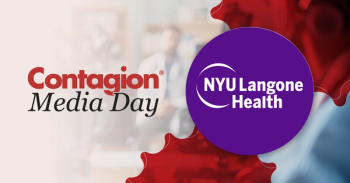
In These COVID 19 Times, Can We Reduce Hospitalizations Due to Skin Infections?
Shortages of health care workers and an increase in COVID-19 cases has put a severe strain on the health care system. Thus, the opportunity to reduce the hospitalizations for other conditions and expand outpatient treatment opportunities should be welcomed.
The Omicron variant is providing yet another surge in COVID 19 cases with its higher transmissibility. Many ICUs are close to, or have exceeded capacity. Additionally, shortages of available nurses and other health care workers (HCW)’s has put an additional strain on the healthcare system. Thus, the opportunity to reduce the hospitalizations for other conditions and expand outpatient treatment opportunities should be welcomed.
Skin and skin structure infections (SSSI) represent one of the best opportunities to accomplish this given their prevalence and the availability of several new single dose agents. It is notable that visits to the ED for a SSSI doubled over the period 2000-2015.1 In fact, of the 3.3 million ED visits with skin infections 529,590 were admitted to the hospital annually.2 A study of 12 emergency departments looked at the reasons for admitting a patient with SSSI.3 This group led by David Talan, MD, showed that 15.5% of 619 patients were admitted and that by far the most common reason given for admission was the need for intravenous antibiotics. The average associated cost of a S. aureus SSSI hospitalization was $11,622 per patient and total annual costs were estimated at $4.5 billion in the United States for the year 2009.4 The antibiotics used most often were vancomycin, linezolid and daptomycin due to the fact that the most common infections are caused by gram positive organisms
Recently, with the approval of the lipoglycopeptide (LPG) family of antibiotics, the ability to treat patients with a single dose of antibiotics and treat them as outpatients represents a new opportunity to reduce admissions and shorten length of stay. These agents have proven to be as effective as longer courses of the most common standard agents.
There are 3 members in this group, dalbavancin, oritavancin and telavancin each approved for treating SSSI. They are all active against methicillin-resistant Staphylococcus aureus and vancomycin resistant S aureus. Oritavancin is unique in that it has 3 modes of action unlike dalbavancin or telavancin. Oritavancin is also effective against VRE.
Two drugs, oritavancin (Kimyrsa) and dalbavancin (Dalvance), require only a single dose for SSSI which can be administered in the emergency department/observation unit. Both dalbavancin and oritavancin can now be administered in an hour or less. Both agents have demonstrated non inferiority to longer vancomycin- based treatment therapies in blinded clinical trials and both have demonstrated the non-inferiority of a single dose regimen. Regulatory phase 3 studies with dalbavancin showed in a dose-ranging study that single dose was non-inferior to 2 doses (81.4% vs 84.2%)5 and a pooled analysis of phase 3 data showed a 79.7% clinical efficacy6 while oritavancin showed clinical efficacy of 80.1%-82.1% in two pivotal trials,7,8 Kimyrsa is equivalent to oritavancin (ORBACTIV) and is given over 60 minutes and has all the clinical and microbiological characteristics of this established drug.9
LPG’s are more costly than the standard agents, but in multiple studies they have been shown to reduce costs when used to treat a patient who otherwise would have been admitted.10-13
The average length of stay nationally for these infections is 3.4 days.14 In most cases the upfront cost of these agents is only a small percentage of the inpatient costs that would otherwise be incurred. Given that reimbursement is often low for SSSI admissions with prolonged LOS, the ability to open up a bed in a crowded hospital to treat more serious conditions is an added benefit to increasing the number of SSSI’s treated as outpatients.
In summary, as health care resources are being stretched by the COVID-19 pandemic and the HCW shortage, LPGs such as oritavancin and dalbavancin represent an immediate opportunity to decrease admissions and practice more cost-effective medicine. As we speak, patients are currently being admitted for gram positive monotherapy when alternatives exist. Adding one of these useful drugs to a hospital’s formulary is a necessity to ensure that a full armamentarium is available to providers to face the challenges they are facing in today’s world.
References
1. Fritz SA, Shapiro DJ, Hersh A. National Trends in Incidence of Purulent Skin and Soft Tissue Infections in Patients Presenting to Ambulatory and Emergency Department Settings, 2000-2015 Clin Infect Dis 2020 Jun 10;70(12):2715-2718. doi: 10.1093/cid/ciz977.
2. LaPensee KT et al. IDWeek Annual Meeting; October 17-21, 2012; San Diego, CA. Abstract PN223
3. Talan DA, Salhi A, Moran G et al Factors associated with decision to hospitalize emergency department patients with skin and soft tissue infection West J Emerg Med. 2015 Jan;16(1):89-97. doi: 10.5811/westjem.2014.11.24133.
4. Surya A, Mera M ,Cassidy R et al Incidence and cost of hospitalizations associated with Staphylococcus aureus skin and soft tissue infections in the United States from 2001 through 2009 BMC Infect Dis. 2014 ;14:296. doi: 10.1186/1471-2334-14-296.
5 Dunne MW, Puttagunta S, Giordano P, Krievins D, Zelasky M, Baldassarre J.A Randomized Clinical Trial of Single-Dose Versus Weekly Dalbavancin for Treatment of Acute Bacterial Skin and Skin Structure Infection. Clin Infect Dis 2016 62(5):545-551
6. Ramdeen S, Boucher HW Dalbavancin for the treatment of acute bacterial skin and skin structure infections Expert Opin Pharmacother 2015;16(13):2073-81. doi: 10.1517/14656566.2015.1075508.
7. Corey GR, Kabler H, Mehra P, et al. Single-dose oritavancin in the treatment of acute bacterial skin infections. N Engl J Med 2014; 370(23):2180–90.
8. Corey GR, Good S, Jiang H, et al. Single-dose oritavancin versus 7–10 days of vancomycin in the treatment of gram-positive acute bacterial skin and skin structure infections: the SOLO II noninferiority study. Clin Infect Dis 2015; 60(2): 254–62.
9.
10. Estrada S, Lodise TR, Tillotson GS et al . The Real-World Economic and Clinical Management of Adult Patients with Skin and Soft Tissue Infections (SSTIs) with Oritavancin: Data from Two Multicenter Observational Cohort Studies Drugs Real World Outcomes. 2020 Jun;7(Suppl 1):6-12. doi: 10.1007/s40801-020-00199-3.
11. Helton B, MacWhinnie B, Minor SA t al Early Directed Oritavancin Therapy in the Emergency Department May Lead to Hospital Avoidance Compared to Standard Treatment for Acute Bacterial Skin and Skin Structure Infections: A Real-World Retrospective Analysis Drugs Real World Outcomes. 2020 Jun;7(Suppl 1):20-29. doi: 10.1007/s40801-020-00201-y.
12. Tobudic S, Forstner C, Burgmann H et al Real-world experience with dalbavancin therapy in gram-positive skin and soft tissue infection, bone and joint infection.Infection. 2019 Dec;47(6):1013-1020. doi: 10.1007/s15010-019-01354-x.
13. Gati M, Andreoni M, Pea F et al. Real-World Use of Dalbavancin in the Era of Empowerment of Outpatient Antimicrobial Treatment: A Careful Appraisal Beyond Approved Indications Focusing on Unmet Clinical Needs. Drug Des Devel Ther. 2021 A;15:3349-3378. doi: 10.2147/DDDT.S313756.
14.data.cms.gov accessed December 21,2021
Newsletter
Stay ahead of emerging infectious disease threats with expert insights and breaking research. Subscribe now to get updates delivered straight to your inbox.




